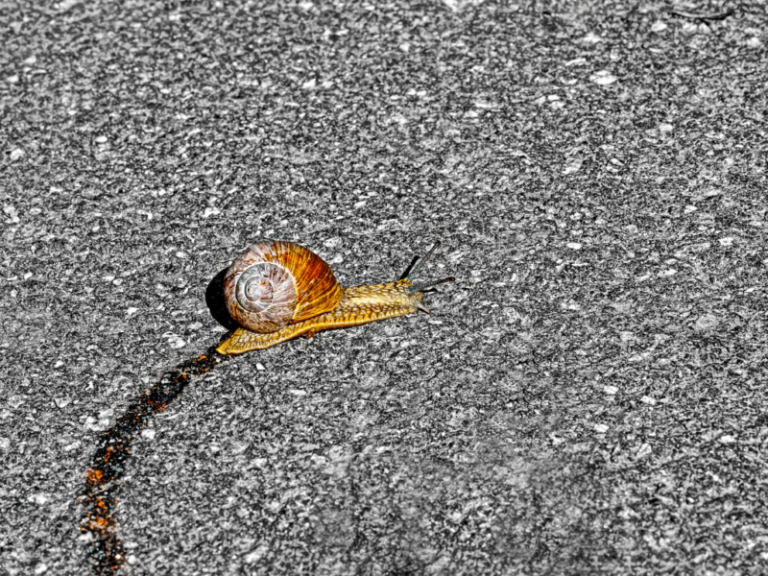Snails are terrestrial gastropod mollusks that are often found in vegetable gardens after rain, where they damage vegetables and other plants, making them harmful animals.
Snails have four retractable tentacles. The front pair of tentacles, which are shorter, function as their “nose” with a sense of smell, while the rear pair, which are longer, each have an eye at the tip. These four tentacles retract suddenly when the snail encounters any obstacles, sometimes retracting individually. When faced with greater danger, it can retract its entire body into its shell.
Snails crawl slowly, earning them the nickname “cows,” which is quite fitting. Snails do not have limbs or feet, so how do they crawl forward? If we let a snail crawl on a glass surface, we can clearly see from underneath that its abdomen has wide and fine transverse folds, tapering towards the rear, which are its “muscular foot.” The snail uses its foot to adhere tightly to other objects, and due to the wave-like contractions of its abdominal muscles, it moves slowly forward. There are glands on its foot called “foot glands” that secrete a very sticky fluid to aid in crawling. Therefore, wherever it crawls, there are traces of the sticky fluid secreted from its foot glands. Once this sticky fluid dries, it forms a shiny trail. If a snail is fixed on a dry wooden board and not allowed to move, once the secreted fluid dries, it becomes stuck to the board like glue, unable to move anymore.
A slug, which resembles a snail but lacks a shell, also leaves a glowing white trail where it crawls, though the nature of the secreted fluid differs slightly from that of snails. The trail left by slugs on paper and fabric makes it fragile, while the trail left by snails does not. Clams can also secrete mucus, which can be washed away with clean water. However, the mucus secreted by snails and slugs requires saltwater to be washed away.

